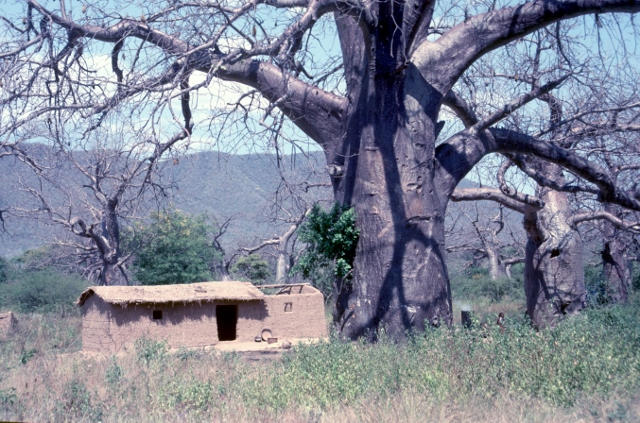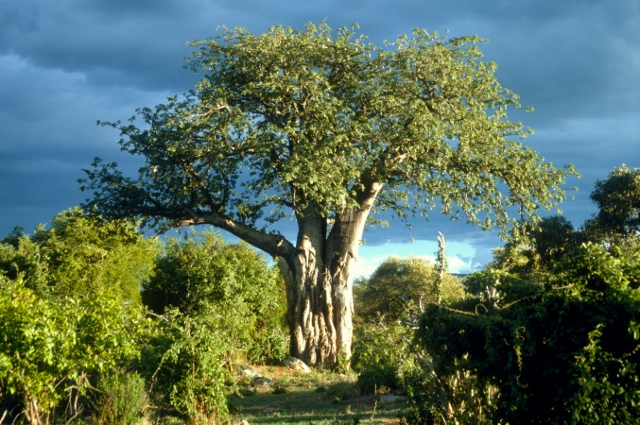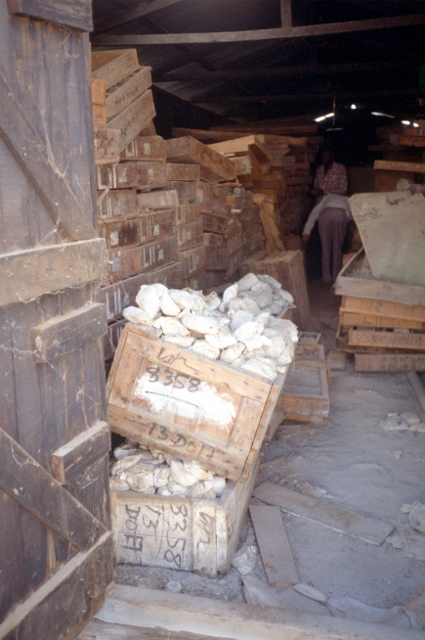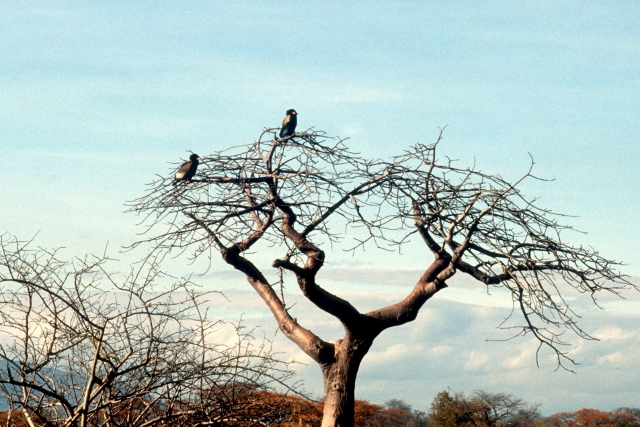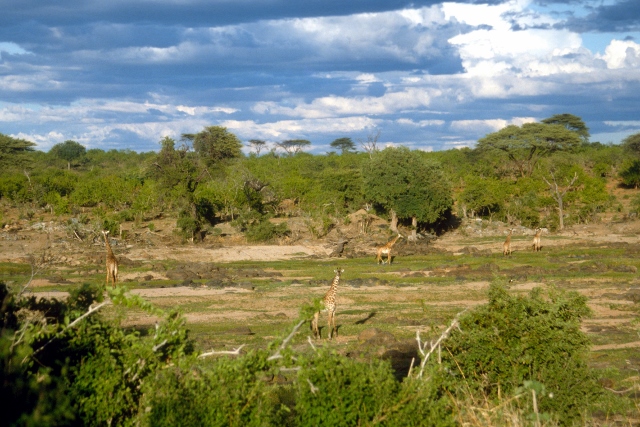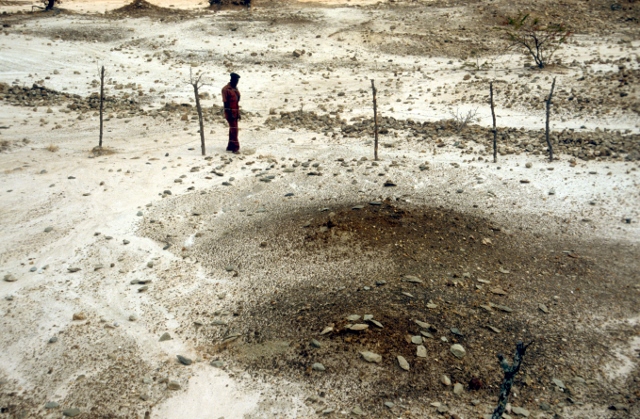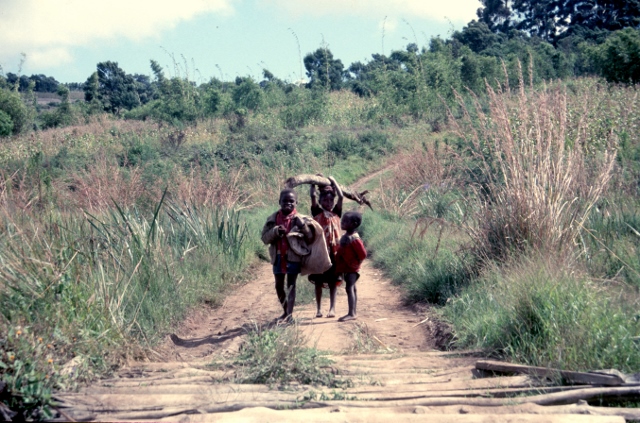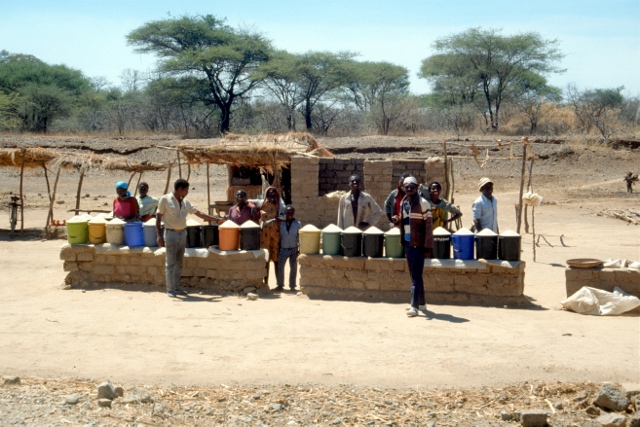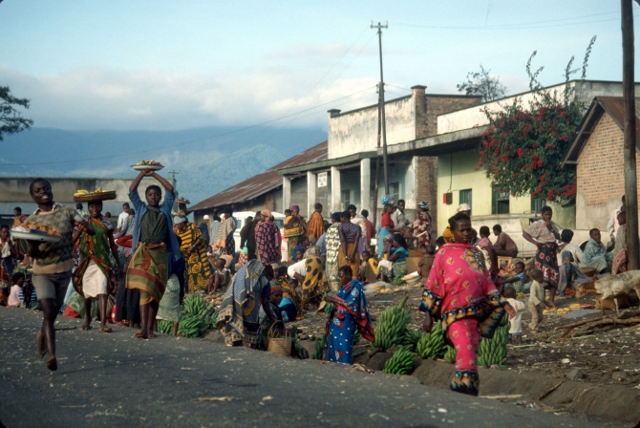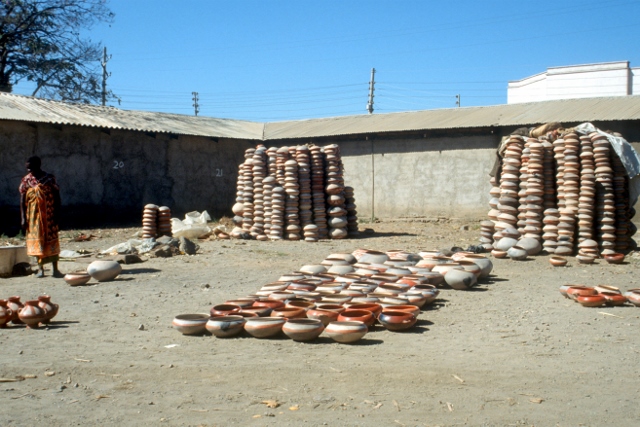I don’t remember a lot from the journeys further inland, mostly in south-western direction. But a few highlights stand out, just because I have some photographs left. I went to Dodoma once, to visit the Geological Survey and analyse core data from earlier oil exploration wells. The Geological Survey had been relocated already, because Dodoma had been designated the future capital of the nation, thanks to its central location. Yet, it was, at the time, not much more than a dusty provincial town in the middle of the plains – and as far as I know, not much has changed in the past 30 years, and Dar es Salaam is still the capital, just like in 1987. Not sure, though, whether the Geological Survey has already been relocated, back to Dar…. Oh, and the other claim to fame was Dodoma Red a undrinkable wine, and the only one produced in Tanzania. I should have visited the estate, of course, just for the experience.
Ruaha National Park
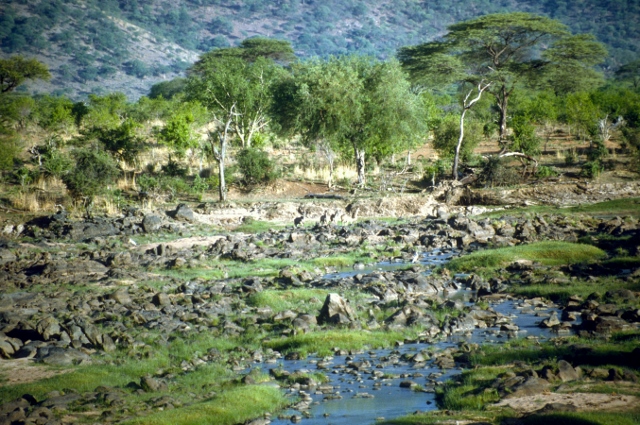
Past the regional hub of Iringa, another dusty provincial town like Dodoma, was the Ruaha National Park, one of the least-visited national parks in Tanzania. Because it was far away – over 600 km from Dar es Salaam -, and because there weren’t a lot of facilities at the time. The attraction was not only the game viewing, which wasn’t much different from other Tanzania parks, but the temperature. At well over 1000 m high, it was a lot cooler here than in sweltering Dar es Salaam, or Mikumi National Park, for that matter.
Altitude comes from mountains, of course, so the natural scenery was also quite different, lots of rocky outcrops, and the Ruaha River valley. Also, large herds, of elephant, for which the park was famous, and of buffalo, quite impressive actually. Another common animal here was the kudu, of which I, somehow, have an inordinate number of photos.
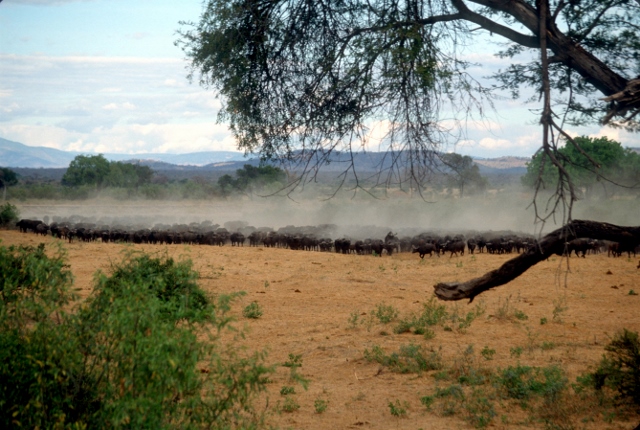
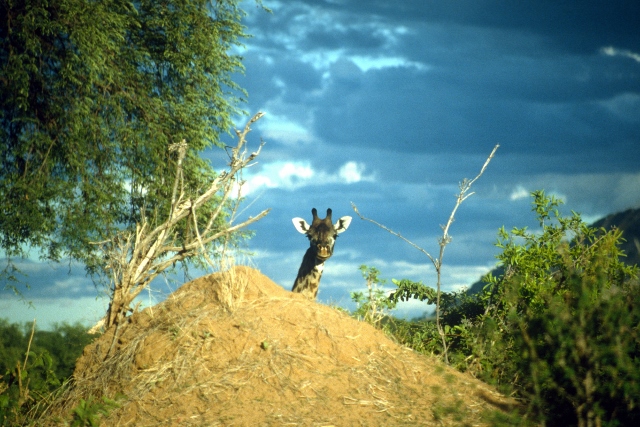
Isimila
Near Iringa was the Isimila Stone Age site, a place, fenced and all, with caretaker, where hundreds, if not thousands of prehistoric stone adzes had been found. I think it had been speculated that this used to be a lake, where people would throw their used adzes in during some kind of ritual; how else to explain the enormous amount of pieces in one place. I somehow ended up with one of those, which I still have in my collection – totally irresponsible, of course.
Brook Bond’s Tea Estate
The higher, and cooler, plateau towards the south-west of Tanzania was also a good place to grow tea. And one of the nicest outings was a long weekend to the Brook Bond Tea Estate, near the town of Mufindi. No game viewing here, but walks, in the mountains, and in between the tea: a nice and fresh atmosphere, a big contrast with the heat at the coast. I recall that we stayed in small cottages, equipped with a real fire place, a necessary attribute at night!
The South-west was a lot poorer than what we were used to see in and around Dar es Salaam. Small villages, mostly mud houses and thatched roofs; small children that didn’t go to school. And everywhere the ubiquitous baobab trees, some of them huge.
Mbeya
Every guide book I had, at the time, said that there was very little to do in Mbeya. Yet, we ended up there, on our way to Malawi. And found it a lovely little town, at the time, with as undisputed highlight its market for clay pots, called Kisi pots, characteristically decorated with orange bands and geometric patterns. There were hundreds, if not thousands of them, far more I would think then could ever be absorbed by the local society. Somehow, I also have one of those, in my collection, still surviving after more than 30 years.
